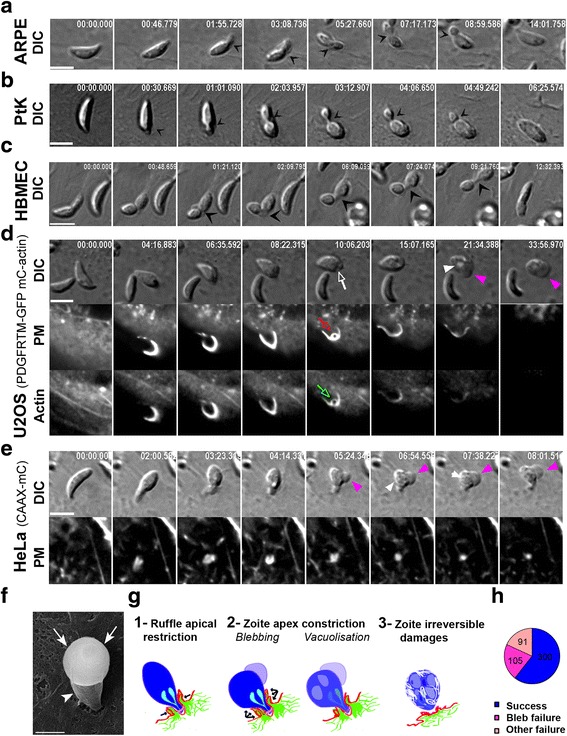Fig. 6.

Host cell ruffles apply compressive forces on the zoite apex that critically increase zoite hydrostatic pressure leading to bleb formation with intravacuolization and eventually to zoite lysis. a–e Time lapses showing DIC and (d, e) fluorescent sequences of interaction events between ΔMyoA zoites and mammalian cells (a) ARPE-19, (b) PtK1, (c) HBMEC, (d) U2OS that transiently co-express the fluorescent PM reporter PDGFReceptor trans-membrane domain (PDGFRTM) coupled to GFP (mC) and the mCactin, and (e) HeLa cells stably expressing the fluorescent PM targeting domain CAAX-mCherry (CAAX-mC). a–c Black arrowheads highlight narrowness of the constriction at the TJ site that almost splits the zoite in two parts (c). d, e Note the equal narrowness of PM fold around the zoite apex (d, red outlined arrow) which is delineated by F-actin (d, green outlined arrow) and the release of damaged zoites. Pink and white triangles show the large bleb and the intravacuolization occurring while parasites are squeezed in PM. All scale bars: 5 μm. f SEM micrograph showing a ΔMyoA tachyzoite interaction with an ARPE-19 cell; note the zoite apical region strongly compressed by host cell membrane ruffles and its swollen rounded extracellular posterior end. Scale bar: 1 μm. g Schematic sequence of interaction events leading to irreversible zoite damage. h Pie graph showing the relative distribution of failed internalization events among which are those associated with a zoite membrane blebbing
